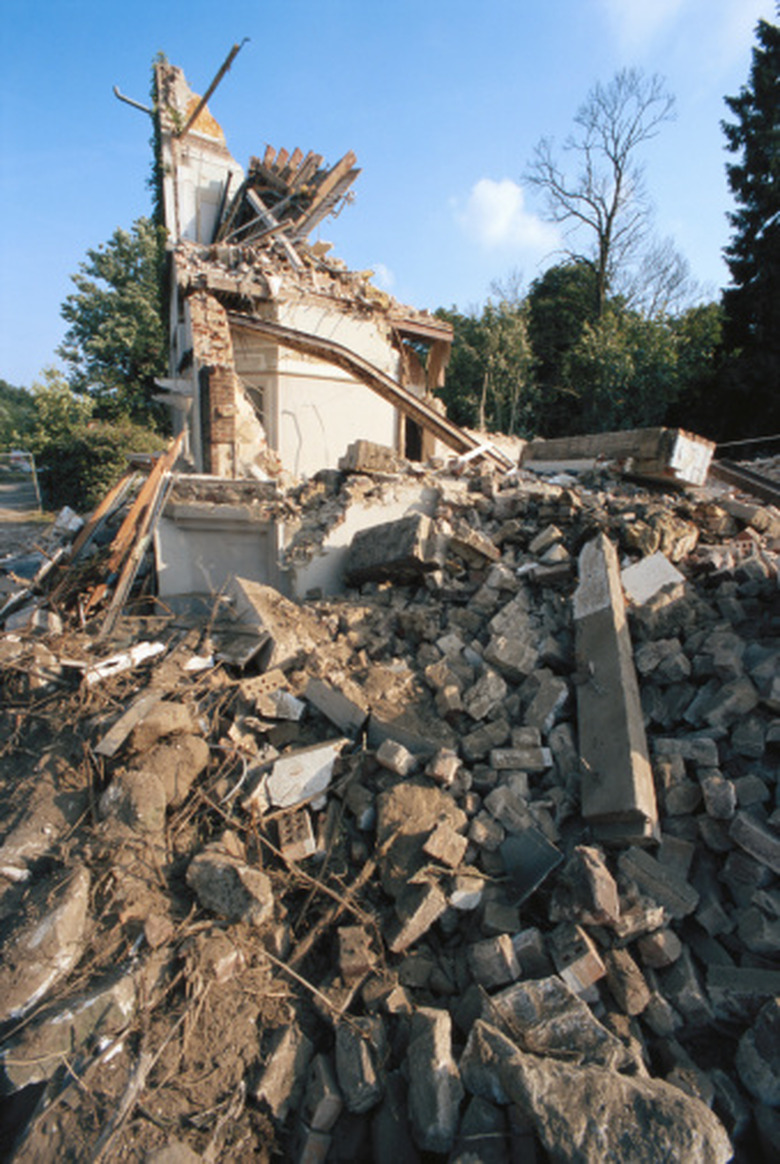What Happens Underground During An Earthquake?
The plates that cover the surface of the Earth are constantly moving due to changes in the molten rock deep within the Earth. The type of activity that takes place between these moving plates can result in earthquakes. Less often, the underground activity that takes place during an earthquake is volcanic. Earthquakes occur on the earth's surface, far away from the site of the action, as a result of seismic waves.
Tectonic Plates
Tectonic Plates
The top layer of the Earth, also known as the crust, is comprised of giant pieces of rock called tectonic plates. Movements within the Earth caused by variations in temperature cause gradual movements in these plates. The distance that they move over the course of a year can range from less than 1 inch to a little over 2 1/2 inches, either into, against each other, past each other or away from each other. The plates above sea level are known as continental plates, and those below the ocean are called oceanic plates. It is along the boundaries of these plates that earthquakes usually occur.
Plate Boundaries
Plate Boundaries
In some places, the edges of tectonic plates are rough and brittle. If plates that are pushing past each other get stuck on a rough edge, energy is stored up. This energy may build for periods of time as long as hundreds of years. The energy continues to build underground until the plates are finally able to move again. This is more likely to happen where plate edges are brittle enough for parts of the rock to break off, causing a sudden jolt. At this point, energy is released underground from the point of movement, known as the epicenter, and this energy travels through the rocks around it and is felt on the surface as an earthquake. Ninety percent of earthquakes occur at plate boundaries, or faults.
Volcanic Activity
Volcanic Activity
More rarely, earthquakes may be caused by volcanic activity. When magma moves into a new area underground, it encounters objects that may stop it flowing smoothly. The results can be felt as an earthquake. When magma moves underground, it can also cause rock to move into the empty spaces that were once occupied by magma but have now been left behind as it has moved on. When this type of activity occurs, earthquakes can be felt at the surface and can produce serious cracks in the surface of the Earth.
Seismic Waves
Seismic Waves
The underground activity of solid rock and magma can be felt on the Earth's surface because of seismic waves. As potential energy is released from the underground epicenter of the earthquake, it travels outwards in all directions in the same way that ripples appear on water when a stone is thrown into it. The energy travels though surrounding material in seismic waves, and these waves can travel through solid, liquid and gaseous substances, causing them to vibrate and shake as they pass through. Eventually, these waves reach the surface, or hypocenter, where they can be felt by humans. The severity of the impact on the Earth's surface depends on the nature of the material that the seismic waves travel through, the amount of underground movement and the amount of potential energy that has been released.
Cite This Article
MLA
Ames, Hayley. "What Happens Underground During An Earthquake?" sciencing.com, https://www.sciencing.com/happens-underground-during-earthquake-8369426/. 24 April 2017.
APA
Ames, Hayley. (2017, April 24). What Happens Underground During An Earthquake?. sciencing.com. Retrieved from https://www.sciencing.com/happens-underground-during-earthquake-8369426/
Chicago
Ames, Hayley. What Happens Underground During An Earthquake? last modified March 24, 2022. https://www.sciencing.com/happens-underground-during-earthquake-8369426/
